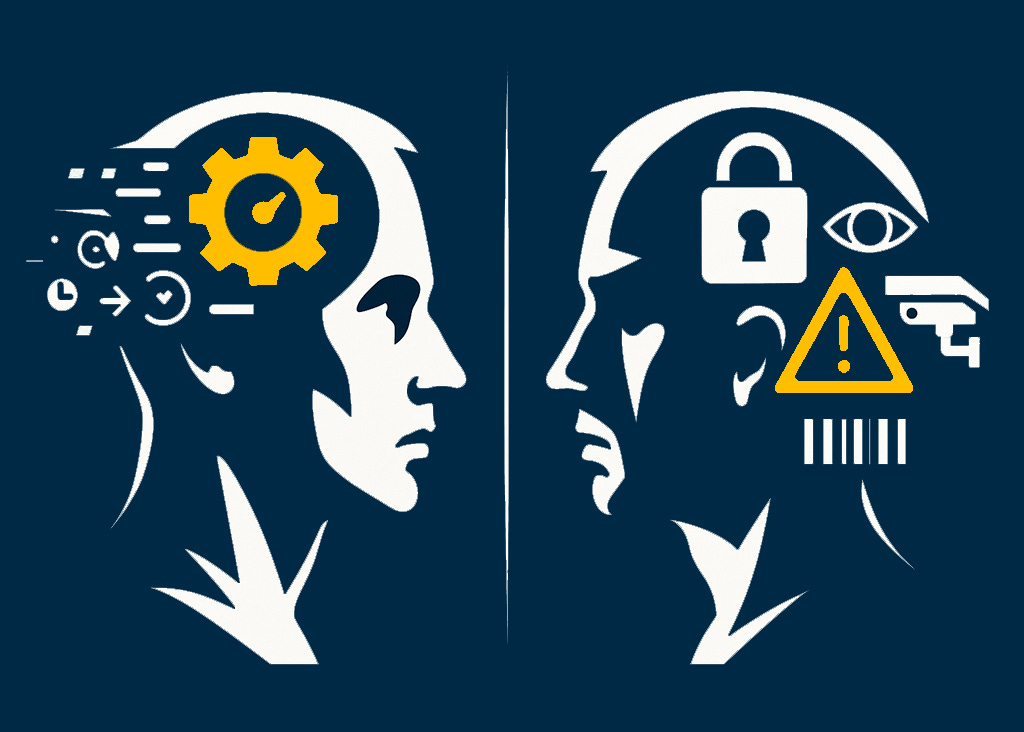The Two Types of AI Anxiety (And Why They Matter)
A guide to understanding your relationship with AI in the workplace
When I began researching AI’s impact on workers, I expected fear. Media headlines were full of job displacement warnings, and pop culture had already primed us to see AI as a threat. But what I found instead was even more useful.
Anxiety around AI isn’t one thing. It’s two distinct experiences that often get lumped together, leading to confusion about what’s really happening at work.
Most AI content is heavy on buzzwords and proclamations, light on real questions. Future of Work…by Design flips that. It’s an accessible newsletter rooted in research and experience, designed not to lecture but to invite discussion.
The AI Anxiety Paradox
Across workers in my study, overall learning anxiety about AI was low. In fact, AI use correlated with higher productivity and autonomy. So why all the fear? Because anxiety shows up differently depending on how people encounter AI.
Type 1: Learning Anxiety
This is the anxiety of the frequent user. These workers rely on AI daily and feel the pressure of constant adaptation:
“I can barely keep up with ChatGPT updates.”
“What if I’m using this wrong?”
“Everyone else seems to know shortcuts I don’t.”
The worry comes from engagement, not avoidance. They are not afraid of AI. They are exhausted by the pace of learning required to use it well. In my research, this showed up most among knowledge workers and those with higher education using AI in high stakes tasks.
Type 2: Trust Anxiety
This is a different story. These workers question whether AI should be trusted at all:
“Who’s monitoring the data I put in?”
“Are we moving too fast without safeguards?”
Here the concern comes from wisdom, not ignorance. In my study, it was most common among senior workers in regulated industries such as healthcare, finance, and government, where risks are high and oversight matters.
Why This Distinction Matters
Treating both anxieties as the same problem leads to solutions that miss the mark. More AI training can help Type 1 workers feel competent. But the same approach will not ease Type 2 concerns. They do not need skills. They need trust in governance, data security, and oversight.
A Quick Self-Check
Which resonates more with you?
Learning anxiety: You use AI regularly but feel behind, prone to errors, or overwhelmed by change.
Trust anxiety: You hesitate to use AI at all, worried about privacy, misuse, or the speed of adoption.
What to Do
If you’re experiencing learning anxiety:
Allow yourself to learn imperfectly.
Focus on one tool at a time.
Share the load with colleagues. You’re adapting, not failing.
If you’re experiencing trust anxiety:
Your concerns are valid and needed.
Ask about your organization’s data and AI policies.
Use your experience to push for thoughtful adoption.
The Bigger Picture
Most AI workplace challenges aren’t really about the technology. They’re about the pace of change and the process of implementation. When organizations rush rollouts without addressing the underlying anxieties of the workers, they create the very problems they’re trying to avoid. Resistance hardens. Trust erodes.
But when leaders understand where anxiety comes from and consider each type appropriately, AI can enhance both productivity and workplace relationships. The future of work is not about eliminating anxiety. It is about listening to what that anxiety tells us and designing change that works with human psychology, not against it.
About this research: This post draws from a study of 299 workers across knowledge, service, and civic sectors examining the psychological impact of AI adoption. The full findings challenge many mainstream assumptions about AI resistance in the workplace.
Quick Bytes
👗 AI replaces designers: At NYFW, the app Neuono generated a “revenge dress” from a selfie and a prompt. Design Observer asks what’s fashion without the designer? It’s a fair question given the uncertainty and speed of AI innovation. But I’ve seen this cycle before. That’s why I’m confident forward-thinking designers will adapt. The ones who should worry are workers at fast-fashion companies like Zara and Shein. They live on speed and imitation, and AI is set to outpace them in that territory along with a promise of a better fit and less waste.
🩻 AI outperforms radiologists: In 2017, CheXNet beat radiologists at spotting pneumonia. Since then, hundreds of FDA-cleared models have followed. Radiology looked like the canary in the coal mine for AI replacing high-skill work. But AI only shines when the answers are already baked into its training data. In real hospitals where answers are ambiguous and outcomes are unclear, it stumbles. Humans still hold an edge in that regard.
⚾️ Robot umps get called up to “The Big Show”: Starting in 2026, MLB will use an Automated Ball Strike Challenge System in every game. Batters get two chances to contest an umpire’s call, with instant verdicts on the jumbotron. The system holds umps accountable for bad calls in real time without stripping away what makes baseball, baseball. Although the common fear is that AI will replace people, I see most automation tech being integrated differently. As a check and balance that strengthens systems while keeping key human elements intact.
Are enough people in your circle getting this kind of AI content? If not, do me a favor and share it with one friend or colleague who should be. 👇🏼


